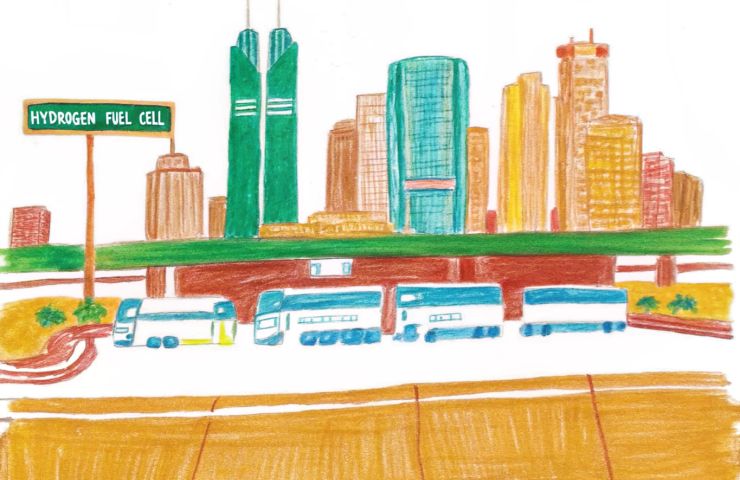
China Hydrogen FCV Report: A Game-Changer for Clean Transport and Hydrogen Mobility
October 24, 2025In the Heart of the Sichuan-Chongqing Corridor, a Quiet Revolution
Hop in the car and cruise the twisty highway between Chengdu and Chongqing, and you’ll catch a glimpse of something new: hydrogen fuel cell trucks gliding by, leaving nothing but a wisp of water vapor behind. This corridor is one of five city alliances—alongside Shandong and Guangdong provinces—really putting Hydrogen Mobility through its paces. And on October 22, 2025, Beijing rolled out its first-ever China Hydrogen FCV Report, a real eye-opener packed with live data from the ambitious Hydrogen 10000 Miles Program.
A Milestone for Hydrogen Mobility
This is the first time we’ve got a full picture of Fuel Cell Vehicles across the country, thanks to a report backed by the Chinese Central Government. It gathers five years’ worth of data—from 2020 to 2025—showing how buses, trucks, and passenger vehicles handle everything from urban routes to long hauls, racking up tens of millions of kilometers. And get this: by the end of 2025, we’re looking at at least 50,000 Fuel Cell Vehicles on Chinese roads, with room to jump to 80,000 if local governments pitch in. That’s exactly the kind of intel policymakers and industry leaders need to supercharge Hydrogen Infrastructure and ramp up Clean Transport.
Real-World Insights Drive Policy
Toss out the lab coats; this report shows how Fuel Cell Vehicles handle real-world headaches—rush-hour gridlock, scorching heatwaves, bone-chilling winters. It drills down on everything from uptime at hydrogen stations to fuel economy when those trucks are lugging their heaviest loads. And by highlighting where things slip, it lays the groundwork for performance-based support, essentially handing stakeholders the blueprint to expand Hydrogen Infrastructure and push Clean Transport across China.
Regional Showcases Power Progress
Think of the five city alliances as grand experiments for every link in the hydrogen chain. Over in Shandong, port tractors and yard trucks are routinely topping 15,000 miles a year each. Meanwhile, Guangdong’s megacities have passenger buses that refuel faster than your coffee break—under 10 minutes, just like diesel rigs. And that Sichuan-Chongqing corridor? It’s already showing off heavy-duty trucks hauling freight through mountain passes as if it were another day at the office. The takeaway? Hydrogen Mobility isn’t a one-trick pony—it’s tough, flexible, and totally ready for showtime.
Collaboration Fuels the Ecosystem
It’s far from a one-man show. The central gov has laid out demo grants, poured money into refueling networks, and sketched regulatory maps to keep things moving. Automakers like SAIC, BYD, Geely, Great Wall Motors, Dongfeng and Yutong are all in a friendly race to perfect their fuel cell stacks and roll them out on the road. At the same time, research institutes are crunching on-road numbers, fine-tuning how these Fuel Cell Vehicles should perform and stay safe. It’s a textbook case of public-private teamwork, each player fueling the push toward a full-blown hydrogen economy.
Broader Impacts and Future Outlook
China’s already scooped up about half of global Fuel Cell Vehicle sales over 2023 and 2024, mostly for heavy-duty trucks and buses. Looking ahead, experts forecast the market growing at over 36% a year through 2035. But those figures aren’t just abstract—they translate into thousands of new jobs in generating hydrogen, building stations, and keeping these vehicles humming. Environmentally, we could slash around 500,000 tons of CO₂ every year if all that hydrogen comes from renewables. Plus, swapping imported diesel for domestically produced hydrogen beefs up energy security, insulating us from global oil price swings.
A Glimpse into the Future
Right now, we’re at a turning point: this inaugural China Hydrogen FCV Report isn’t just a stack of charts—it’s a roadmap to cleaner, safer transport. With clear goals—50,000 Fuel Cell Vehicles on the road by year’s end, refueling networks that can grow on demand, and a tested policy playbook—China is truly leading the charge for Hydrogen Mobility. Everyone’s got eyes on this, because the lessons here can guide any country eager to dive into Clean Transport. As one seasoned pro put it, “This isn’t next-gen—it’s here.” And that’s what makes this a real game-changer for our shared energy future.



 With over 15 years of reporting hydrogen news, we are your premier source for the latest updates and insights in hydrogen and renewable energy.
With over 15 years of reporting hydrogen news, we are your premier source for the latest updates and insights in hydrogen and renewable energy.